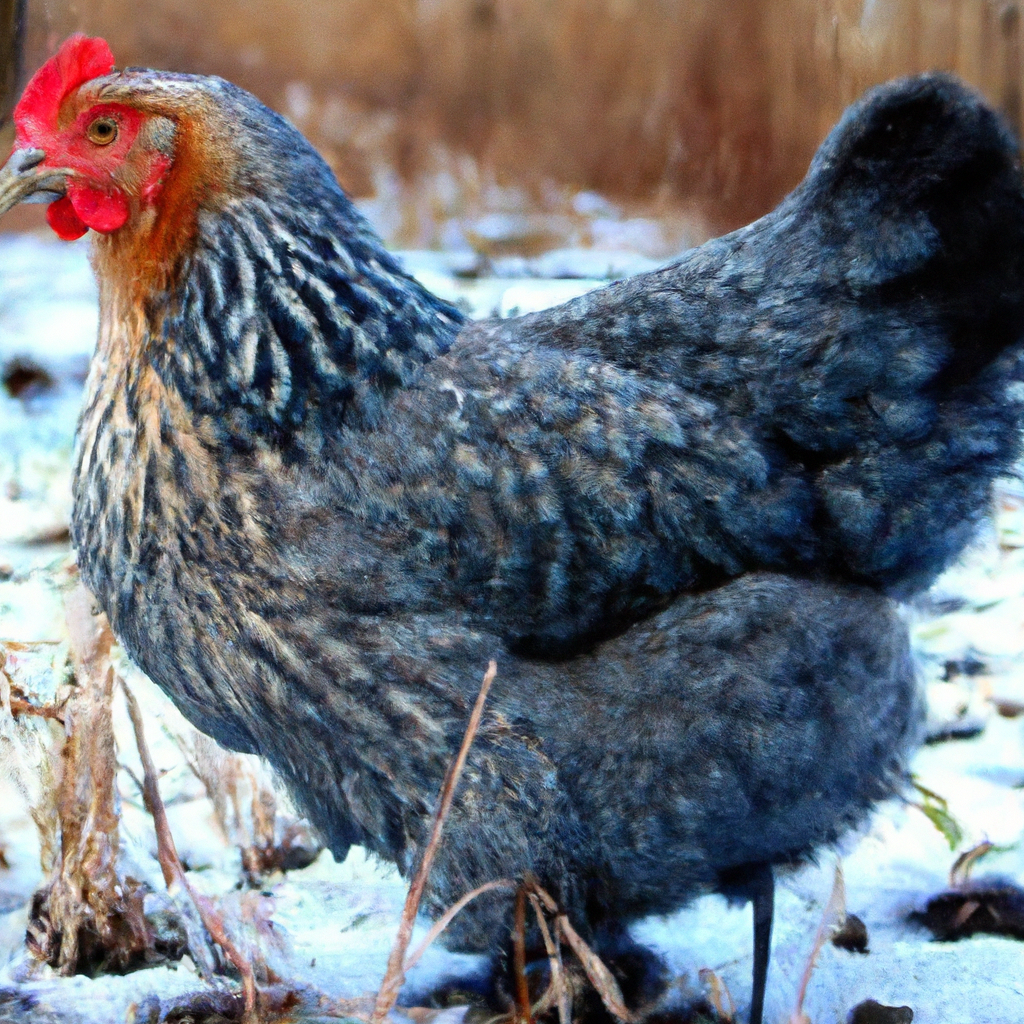
So, you’ve decided to venture into the world of backyard chicken keeping, but the looming question remains: how do you prepare your feathered friends for the unpredictable and often harsh conditions of extreme weather? Whether it’s scorching summers or freezing winters, acclimating chickens to these challenging environments is key to ensuring their health and well-being. In this article, we’ll explore some practical tips and techniques to help you effectively prepare your chickens for any weather conditions that may come their way. With a little knowledge and a friendly approach, you’ll be well on your way to raising happy and resilient feathered companions.

Preparing the Coop
Insulate the walls
Insulating the walls of the chicken coop is crucial to protect the birds from extreme weather conditions. Proper insulation helps regulate the temperature inside the coop and keeps the chickens comfortable. You can use materials like foam insulation or fiberglass batts to insulate the walls. Ensure that there are no gaps or cracks where cold air can seep in during winter or hot air during summer.
Add bedding
Adding bedding to the coop provides insulation and helps regulate the temperature. Good bedding materials include straw, wood shavings, or shredded paper. These materials create a layer of insulation between the chickens and the floor, keeping them warm in winter and cool in summer. Make sure to regularly clean and replace the bedding to maintain a clean and healthy environment for your chickens.
Install fans or ventilation system
Proper ventilation is vital for the well-being of your chickens, especially during hot weather. Installing fans or a ventilation system helps circulate fresh air and prevent the buildup of excessive heat and ammonia from droppings. Make sure the ventilation system is positioned in a way that allows air to flow but does not create drafts that can harm the chickens. Regularly clean and maintain the ventilation system to ensure optimal airflow.
Adjusting Feed and Water
Increase protein content
During extreme weather conditions, chickens require additional protein to support their energy and immune function. Increase the protein content in their feed by adding supplements or switching to a higher protein formula. Protein-rich foods such as mealworms, sunflower seeds, and soybean meal can be offered as treats to supplement their regular feed. Consult with a veterinarian or poultry expert to determine the appropriate protein levels for your chickens’ specific needs.
Provide electrolytes
Extreme temperatures can lead to dehydration in chickens. To replenish their electrolyte balance and maintain hydration, provide electrolyte supplements in their water. These supplements contain essential minerals and vitamins that support hydration and overall health. Ensure that the electrolyte supplements are suitable for chickens and follow the recommended dosage instructions.
Ensure constant access to clean water
Water is crucial for chickens’ survival, especially during extreme weather conditions. Ensure that your chickens have constant access to clean and fresh water. Inspect and clean the waterers regularly to prevent bacterial growth. During hot weather, consider using larger waterers or incorporating multiple water sources to accommodate increased water consumption. In freezing temperatures, insulate the waterers to prevent freezing and provide warm water if necessary.

Managing Heatwaves
Create shaded areas in the coop
In extreme heat, chickens can suffer from heat stress or even heat stroke. Create shaded areas in the coop by installing awnings or providing natural shade with plants or trees. This helps protect the chickens from direct sunlight and offers cooler areas for them to retreat to.
Use misters or sprinklers
Misters or sprinklers can provide relief during scorching hot days. Install misters or sprinklers in designated areas within the coop to create a cooling effect. The mist or water droplets help lower the ambient temperature and provide a refreshing environment for the chickens. Ensure that misters or sprinklers do not excessively wet the bedding or coop floor.
Provide frozen treats
Frozen treats can be a fun and refreshing way to help chickens cool down during heatwaves. Freeze fruits, vegetables, or even plain water in containers or ice cube trays and offer them to the chickens. These treats not only help combat the heat but also serve as a source of hydration and entertainment for the birds.
Protecting from Cold
Use heat lamps or heaters
During cold weather, it’s essential to provide supplemental heat to keep your chickens warm. Heat lamps or heaters can be installed in the coop to maintain a comfortable temperature. Position the heat source safely, away from any combustible materials, and ensure that it is securely mounted to prevent accidents. Regularly inspect the heat source to ensure it is functioning properly and does not pose any fire hazards.
Add extra bedding
To provide additional insulation and keep the chickens cozy, add extra bedding during cold weather. Increase the depth of the bedding, especially on the floor and nesting areas. The bedding traps heat and helps retain warmth within the coop. Monitor the bedding regularly to ensure it remains dry and clean, as damp bedding can lead to health problems for the birds.
Cover coop windows with plastic
Covering the coop windows with plastic helps to minimize drafts and retain heat during cold weather. Use clear or greenhouse-grade plastic to allow sunlight to enter, while still providing insulation. Secure the plastic tightly to prevent it from blowing off in strong winds or getting damaged by the chickens. It’s important to maintain proper ventilation even with the windows covered to prevent the buildup of ammonia.

Dealing with Rain and Wet Conditions
Ensure proper drainage in the coop
Proper drainage is essential to prevent the coop from becoming damp and muddy during rainy periods. Ensure that the coop floor is sloped to allow water to drain away effectively. If necessary, add gravel or sand to improve drainage. Regularly inspect the coop and clear any debris or blockages in the drainage system to avoid water buildup.
Provide raised perches
Raised perches help keep chickens dry by providing them with a comfortable roosting area above any potential pooling water. Build or install raised perches in the coop, keeping them a sufficient distance above the ground to avoid contact with the wet floor. Ensure that the perches are sturdy and wide enough for the chickens to comfortably rest on.
Use deep, absorbent bedding
During wet and rainy conditions, using deep, absorbent bedding helps to keep the chickens dry. Wood shavings, straw, or pellets are excellent options that can absorb moisture. Maintain a thick layer of bedding throughout the coop, paying extra attention to the nesting areas. Regularly monitor the bedding and replace it if it becomes excessively wet or dirty.
Shielding from Wind
Block off drafty areas
Drafts can be detrimental to chickens’ health, especially during windy weather. Inspect the coop for any drafty areas and seal them off. Use caulk or weatherstripping to seal gaps around doors, windows, and vents. Preventing drafts helps maintain a stable microclimate within the coop and prevents cold air from directly reaching the chickens.
Create windbreaks
To shield the coop from strong winds, create windbreaks by strategically placing barriers such as hay bales, wooden panels, or windbreak fabric. Position them on the side of the prevailing wind to minimize its impact on the coop. Windbreaks not only provide protection but also create a sense of security for the chickens during windy weather.
Cover the coop with tarps or plastic
During particularly windy conditions, covering the coop with tarps or plastic can offer an extra layer of protection. Securely attach the tarps or plastic to the coop, ensuring that they are taut and provide ample coverage. This barrier helps minimize wind exposure and prevents gusts from entering the coop, keeping the chickens more comfortable.

Preparing for Snow and Ice
Clear pathways for easy movement
Snow and ice can obstruct the chickens’ movement, making it difficult for them to navigate their environment. Regularly clear pathways in the coop and surrounding areas to ensure the chickens can move freely. Remove accumulated snow from walkways, ramps, and access points to prevent injuries and keep the chickens active and engaged.
Insulate waterers to prevent freezing
During freezing temperatures, it’s crucial to prevent waterers from freezing to ensure the chickens have constant access to water. Insulate the waterers by wrapping them with insulation material like foam or using insulated waterer covers. Insulating the waterers helps maintain water temperature and prevents freezing. Check the waterers regularly and replace them immediately if they show signs of damage or freezing.
Increase coop bedding for insulation
To provide additional insulation and warmth during snowy or icy conditions, increase the amount of bedding in the coop. A thicker layer of bedding helps retain heat and provides a comfortable surface for the chickens to rest on. Regularly monitor the bedding and remove any wet or soiled areas to prevent health issues.
Handling Extreme Temperatures
Provide access to cool, shaded areas
During extreme temperature conditions, it’s essential to provide chickens with access to cool, shaded areas. Ensure that the coop has shaded spots or built-in covers where the birds can escape the direct heat or cold. Consider planting trees or installing awnings outside the coop to create additional shade. Allow the chickens to choose where they want to be and monitor them to make sure they are comfortable.
Use heat lamps in cold temperatures
In extremely cold temperatures, heat lamps can be a valuable source of supplemental warmth for your chickens. Install heat lamps in areas where the chickens congregate, such as roosting areas or near nesting boxes. Opt for heat lamps specifically designed for agricultural use and follow the manufacturer’s instructions for safe installation and operation. Regularly check the lamps to ensure they are working correctly and do not present any fire hazards.
Monitor chicken behavior for signs of discomfort
Chickens may exhibit signs of discomfort or distress when exposed to extreme temperatures. Monitor their behavior closely for signs such as panting, lethargy, shivering, or huddling together. These behaviors may indicate that the current conditions are not suitable for them. Make adjustments as needed, such as providing additional heating or cooling options, to ensure the chickens’ well-being and comfort.
Monitoring and Adjusting
Regularly assess weather conditions
As a responsible chicken owner, it’s crucial to stay informed about weather conditions in your region. Regularly monitor weather forecasts to anticipate extreme temperatures, precipitation, or other weather events. Stay prepared and make proactive adjustments to the coop environment based on the forecasted weather conditions. Being proactive in your approach will help ensure the comfort and safety of your chickens.
Observe chicken behavior
Observing your chickens’ behavior is a helpful indicator of how they are coping with weather conditions. Pay attention to how they interact with their surroundings, their eating and drinking habits, and their overall activity levels. Any sudden changes in behavior may signal that adjustments need to be made to their environment. Regularly spending time with your chickens and observing them provides valuable insights to maintain their well-being.
Make necessary adjustments based on the weather
Based on the weather conditions and your observations, be prepared to make necessary adjustments to the coop environment. This may include adding or removing bedding, adjusting ventilation settings, providing additional heat or cooling sources, or modifying the chicken’s diet. Continuously assess the coop and its surroundings to ensure that the chickens’ needs are met throughout different weather conditions. By staying vigilant and adaptable, you can ensure your chickens are comfortable and healthy in any extreme weather situation.
Acclimating New Birds
Gradually introduce new birds to the flock
When introducing new birds to an existing flock, it’s important to do so gradually to minimize stress and potential conflicts. Keep the new birds separated from the established flock initially, allowing them to see each other without physical contact. After a period of observation, gradually introduce the new birds to the flock in a supervised setting. Monitor their interactions closely and intervene if necessary to prevent aggression.
Ensure new arrivals have time to adjust to the conditions
Newly arrived birds need time to adjust to their new environment and the existing flock. Provide them with a designated area within the coop or a separate enclosure where they can acclimate at their own pace. This allows them to become familiar with the coop layout, available resources, and the social dynamics of the flock. Gradually integrate them with the rest of the flock once they are more comfortable and confident.
Monitor for signs of stress or bullying
During the acclimation process, it’s important to monitor the new birds for signs of stress or bullying from the existing flock. Pay attention to behaviors such as excessive pecking, aggression, feather loss, or isolating behavior. If any signs of distress are observed, intervene by separating the culprit or providing additional hiding spots or perches to alleviate aggression. Ensuring all birds feel safe and secure promotes a harmonious and healthy environment within the flock.
Acclimating chickens to extreme weather conditions requires careful planning, regular monitoring, and timely adjustments. By following the guidelines mentioned above, you can ensure the well-being and comfort of your feathered friends during challenging weather situations. Remember, a healthy and happy flock is a result of your dedication and attentiveness to their specific needs.







